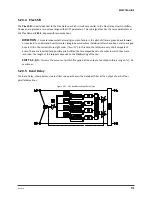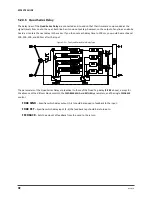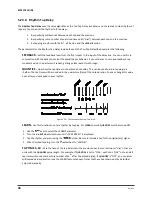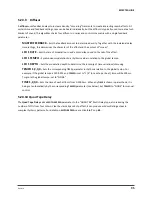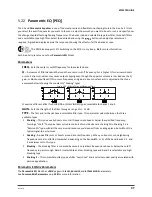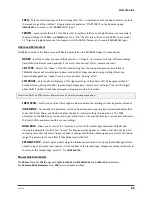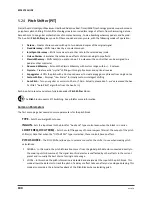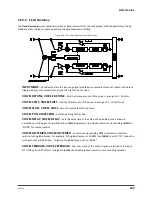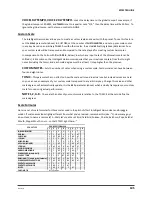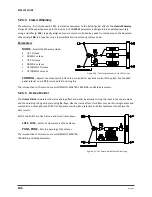
94
Doc Q7.0
Rhythm Tap Delay
5.20.8
The
Rhythm Tap Delay
uses the same algorithm as the Ten-Tap Delay but allows you to create a custom rhythm of
repeats. You can enter the rhythm in three ways:
1.
By specifying milliseconds between each tap and the previous.
2.
By specifying some number of quantized time units (“divs”) between each tap and the previous.
3.
By tapping a rhythm with the
button and the
LEARN
function.
The parameters for the Rhythm Tap Delay include those of the Ten-Tap Delay (
FEEDBACK
– Sets the feedback level from the final repeat to the input of the delay line. You can use this in
conjunction with the decay to control the overall decay behavior. If you set decay to zero and feedback to a
moderate value, the pattern will repeat, getting quieter each time through.
QUANTIZE
– Quantizes the tap times to the entered note value. This can be used to aid in tapping in a
rhythm. The tap times will be rounded to the nearest multiple of the note duration. You can change this value
even after you’ve tapped in your rhythm.
Figure 5-23 – The concept of Rhythm Tap "divs"
LEARN
– Use this function to enter a rhythm by tapping. For
LEARN
to work,
QUANTIZE
must be turned OFF.
Use the
keys to select the LEARN Parameter
Turn the
wheel clockwise until “<TAP ENTER>” is displayed.
Tap the rhythm you want using the
button. Be sure to include a tap for the original (dry) signal.
When finished tapping, turn the
wheel to “<DONE>”.
TAP TIME 1–10
– Sets the time of the tap (relative to the previous one) in ms or divisions (“divs”). Divs are
units with the
QUANTIZE
value length. For example, if
QUANTIZE
is set to “1/16
”
, each div is 1/16
th
note, and all
tap times will sound some whole number of 16
ths
after the preceding tap. If
QUANTIZE
is “OFF”, you can enter
millisecond values directly or use the LEARN feature (above). Times that have been learned may be further
adjusted manually.












